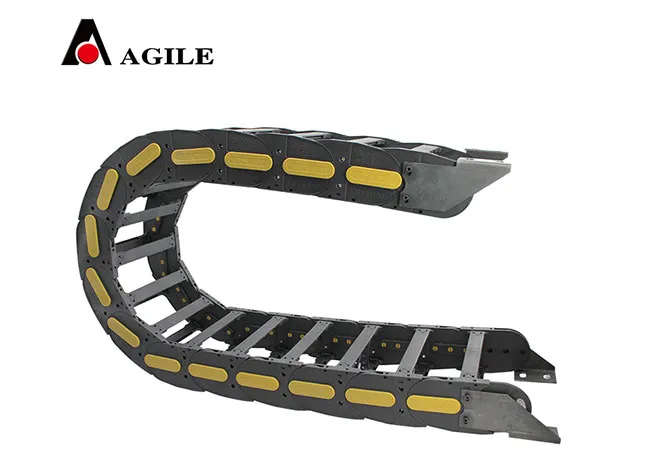cable chain track
Understanding Cable Chain Tracks An Overview
In the realm of engineering and machinery, the cable chain track has emerged as an essential component for the efficient management of cables and hoses in various applications. This ingenious device, often called a cable drag chain or energy chain, is designed to protect and guide flexible cables and hoses while maintaining their integrity during movement. The importance of cable chain tracks cannot be overstated, as they are vital in industries ranging from manufacturing to robotics and aerospace.
Functionality and Design
The primary function of a cable chain track is to organize and protect cables and hoses from potential damage caused by bending, twisting, and abrasion. These tracks are composed of interconnected links, creating a flexible pathway that allows for unrestricted motion along designated axes. This design is crucial in dynamic applications where machinery elements move repetitively, offering a safe passage for electrical wires, hydraulic pipes, and pneumatic lines.
Typically constructed from durable materials such as plastic or metal, cable chain tracks can be tailored to accommodate different sizes and types of cables. The open or closed design of the chain allows for easy installation and maintenance, enabling engineers to add or replace components without downtime. Moreover, these tracks come in various shapes and sizes, allowing them to fit seamlessly into the layout of any machine or automated system.
Applications in Industry
Cable chain tracks are utilized in a multitude of settings, primarily where movement and flexibility are essential. In manufacturing, these tracks are often found in CNC machines, conveyor systems, and robotic arms, ensuring seamless operation while safeguarding critical cables. For instance, in the automotive industry, where precision and efficiency are paramount, cable chain tracks play a significant role in streamlining operations.
cable chain track

In the field of robotics, cable chains are essential in maintaining cable integrity as robotic arms extend and retract. They prevent tangling and damage, which could lead to costly repairs and downtime. Moreover, cable chain tracks are commonly deployed in the aerospace sector for managing cabin systems, where space is limited, and reliability is crucial.
Benefits of Cable Chain Tracks
The use of cable chain tracks carries numerous advantages. First and foremost, they significantly enhance the lifespan of cables and hoses by minimizing exposure to harsh environments and mechanical stress. This protective measure ultimately leads to reduced maintenance costs and fewer system failures. Additionally, the organized structure of cable chains aids in simplifying troubleshooting processes. When cables are neatly managed, diagnosing issues becomes a more straightforward task, leading to more efficient workflow and increased productivity.
Furthermore, the adaptability of cable chain tracks makes them suitable for various applications. Many manufacturers offer customizable solutions, allowing businesses to select the right type of chain based on specific operational needs.
Conclusion
Cable chain tracks are a fundamental yet often overlooked component in modern engineering and manufacturing. By providing a reliable and efficient way to manage cables and hoses, they contribute significantly to the smooth operation of machinery across numerous industries. As technology continues to advance, the importance of innovative solutions like cable chain tracks will only grow, ensuring that industries can maintain productivity while safeguarding their equipment.








